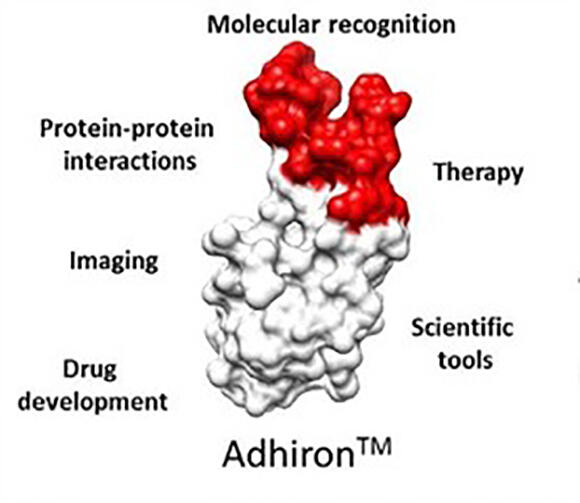
LSTM’s Seminar Series continued this week with a presentation by Professor Michael McPherson, Professor of Biomolecular Engineering and Director of the BioScreening Technology Group at Leeds University. His talk, entitled: Development of Adhiron artificial binding proteins, was introduced by LSTM’s Professor Richard Pleass.
Professor McPherson began explaining that antibodies are the most commonly used binding proteins and that there have been a large number of different versions of antibodies generated in an attempt to improve binding reagents. While they remain extremely important in scientific research, diagnostics and therapy there are limitations to antibodies as they can be very large, unstable, can be difficult to generate in a reproducible format and can be expensive as production relies on the use of animals, which is why artificial binding proteins have been developed.
He went on to describe the development of the non-antibody scaffold protein, termed Adhiron, which is based on a phystocystatin consensus system. Adhirons are very stable even at high temperatures, can be produced recombinantly and in large amounts, making them a more robust alternative to antibodies. Professor McPherson and his team have built a large phage display library that can be screened against a wide range of target molecules to identify specific binders that can be produced easily on a large scale. At this point there are more than 250 targets, but the list is growing all the time and includes proteins, peptides, cells, modified peptides, organic molecules and inorganic compounds.
Professor McPherson gave a number of examples of applications using Adhirons, which included crystallisation chaperones, synthetic biology, in vivo functional assay, diagnostic devises, drug targeting and therapeutics as well as antibiotic sensitivity and he went on to explain how the team has managed to redesign sensitivity to some resistant MRSA strains.
The team have learned more about the uses of Adhirons when colleagues have brought specific problems to them to see if they can form part of a solution. Currently they are working with a clinical team looking at inflammatory diseases, particularly arthritis. They have used the library to isolate the binding proteins and have been able to look at what is happening on a molecular level through the use of x-ray crystallisation and it is hoped that by looking at the interaction between Ahiron and the binding agent that Adhiron can potentially block the receptor function.
He concluded by answering questions about other potential uses from audience members and looked at opportunities to work with a wider range of researchers within LSTM.